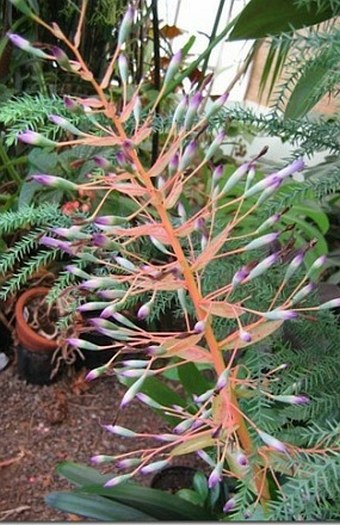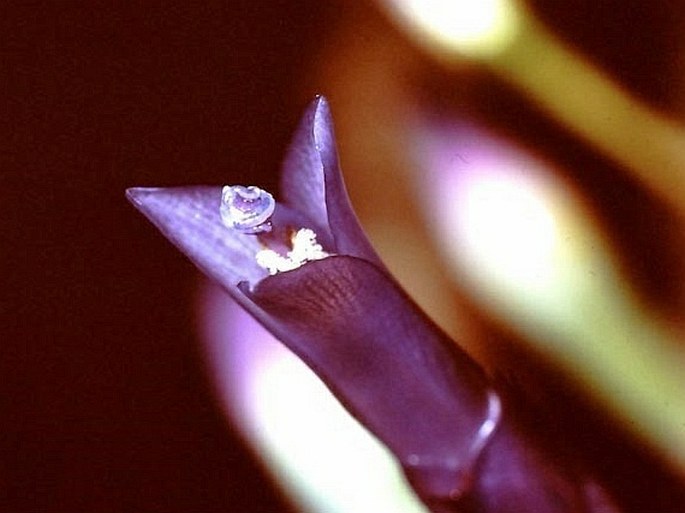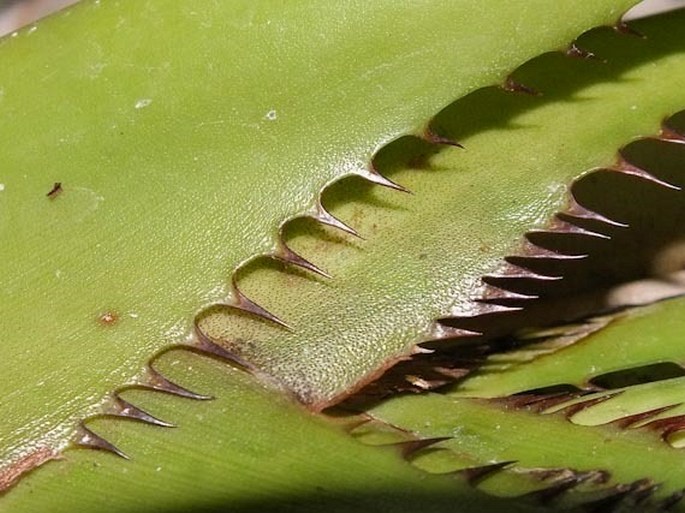Syn.: Aechmea petropolitana Wawra, Portea gardneri Baker, Streptocalyx podantha Baker
Family: Bromeliaceae Juss.


Distribution: Eastern Brazil, Mata Atlântica, states of Espírito Santo, Minas Gerais, Rio de Janeiro.
Ecology: Species growing inland and in the littoral, terrestrially in sand, on rocks, in full sun and epiphytically on roots of mangroves, close to high tide. The flowers of this bromeliad produce copious, highly sugary nectar, favourite food of hummingbirds.
Description: Monocarpic plant, acaulescent, loose, funnel-shaped rosette of leaves, up to 100 cm tall; leaves numerous, up to 80 cm long, up to 5 cm wide, margins covered with dark brown spines, up to 6 mm long at base. Inflorescence is an open panicle, about 40 cm long, 15 cm wide, elevated from the plant rosette; scape bracts green, enveloping shaft, smooth; panicle branch bracts 10 cm long at bottom, 1 cm at top, elliptical with pointed tip, pinkish; flower bracts scale-like; flowers 1.5–4 cm long, trimerous, long-stalked; sepals 1.5 cm long, violet purplish, spine-tipped; petals 3 cm long, 5 mm wide, blue violet with darker tips; ovary 1 cm long green. Fruit is a berry, dark purple.
Note: The genus Portea contains about 8 species, which are found in coastal areas of eastern Brazil.



These images were taken in culture.


